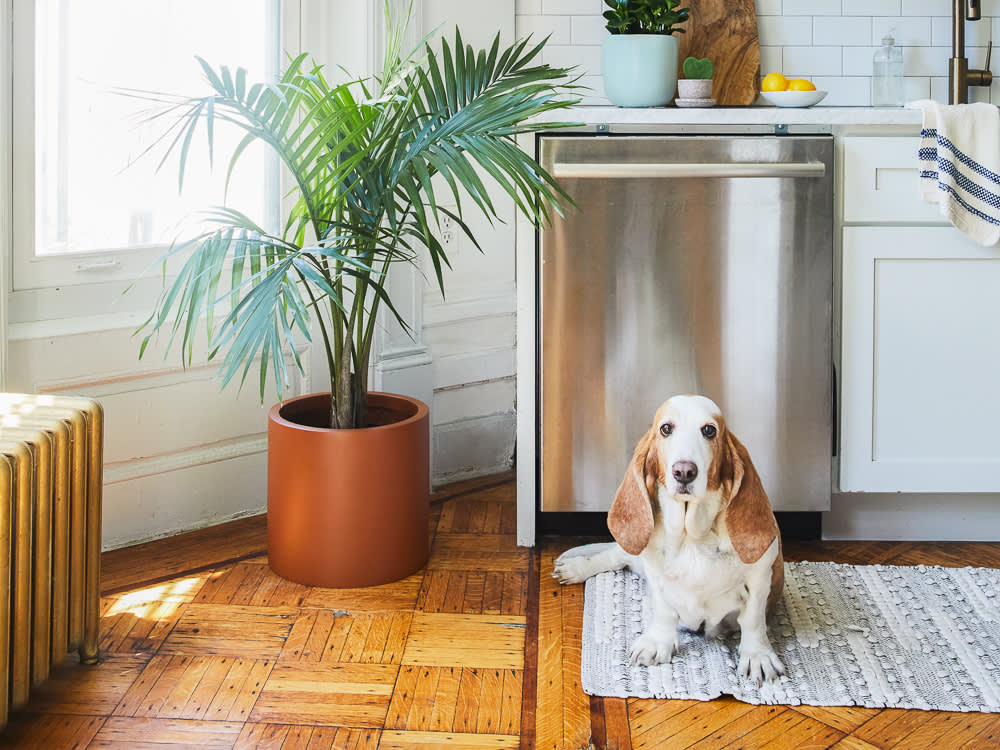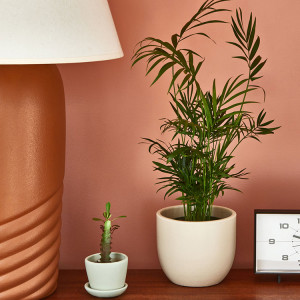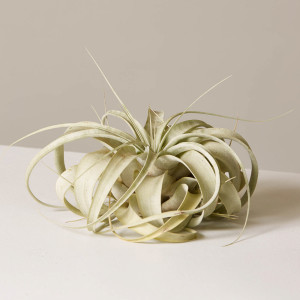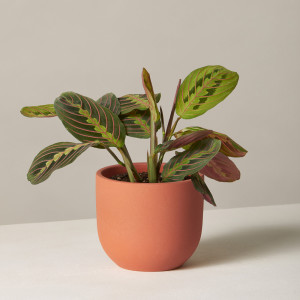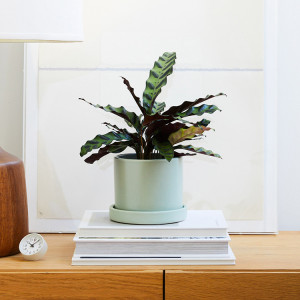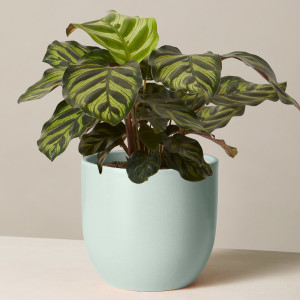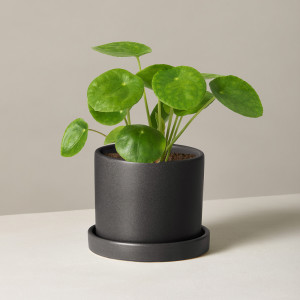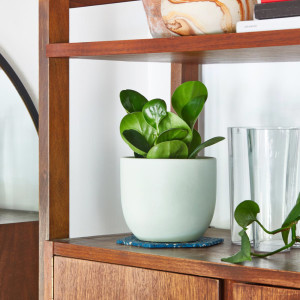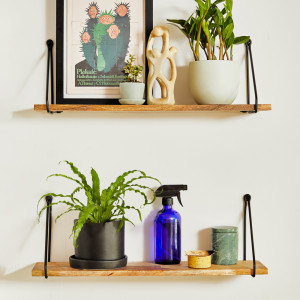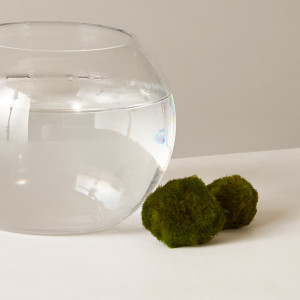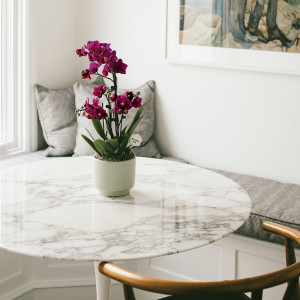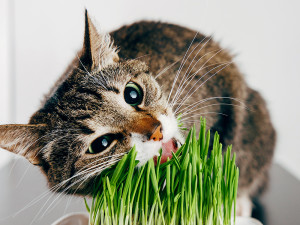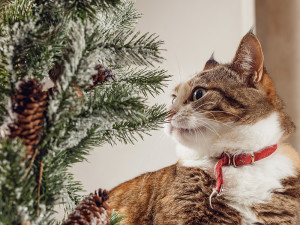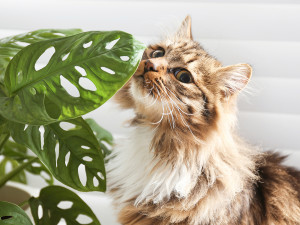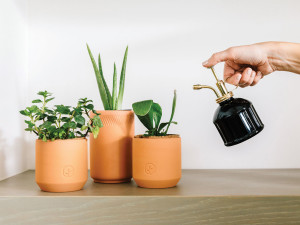Garden Variety: Plants Safe for Our Pups
Boutique NYC nursery The Sill gives us the dirt on dog-friendly plants.
Plant parents are often as devoted as pet parents. After all, our photosynthesizing friends are rumored to boost mood and creativity — as do dogs! But before you scatter azalea seeds for inspiration, not all dogs and plants get along. (Azaleas, as it happens, are one of many plants toxic to pets.) Wondering if your dog is barking up the wrong tree? Below, The Sillopens in new tab’s resident plant guru Erin Marino gives us the dirt on plants that are safe for pets.
Parlor Palm
Consider the Parlor Palmopens in new tab a mini palm tree for your space. Its tropical vibes make it a popular houseplant, but unlike palm trees at the beach, this one is happiest in bright, indirect sunlight. Fun fact: this plant has been cultivated since the Victorian era — it was (and still is) prized for its resilience to indoor conditions and easy-going nature. A palm without pretense, if you will.
Xerographica (a.k.a. Air Plant)
If you are potting soil adverse, look no further than an air plant, which does not require a planter to grow. This particular air plant, the Xerographicaopens in new tab, is characterized by its silvery grey curling leaves that form a rosette shape. It’s like a living sculpture for your space. To water, soak it weekly in a bowl of water for about 15-30 minutes, then shake off any excess water.
Maranta
The Maranta is nicknamed the ‘prayer plant’ because of its unique leaf movements — it raises and lowers its leaves from day to night as part of the plant’s circadian rhythm. It is also popular for its dramatic foliage, which almost looks painted on. Intense, direct sun can burn its beautiful leaves. Pro tip: Marantas can be super sensitive to hard tap water — if yours isn’t happy, try using filtered water.
How much do you spend on your pet per year?
Calathea Rattlesnake
The Calathea Rattlesnakeopens in new tab is a visual drama queen. It has long, wavy green leaves with a pattern of deep green brushstrokes on top, resembling reptile skin, and a deep purple underside. Like the Maranta, it too raises and lowers its leaves from day to night, a phenomenon called nyctinasty. Check out a time lapse of its movements hereopens in new tab.
Calathea Makoyana
Another popular, pet-friendly Calathea, the Makoyana is affectionately called the peacock plant because of its printed leaves. It can grow up to two- to three-feet tall indoors if given proper care. The Calathea Makoyana thrives in medium to bright indirect light.
Pilea Peperomioides
The trendy Pilea peperomioides, also called the pancake or UFO plant, is known for its adorable coin-shaped leaves. A self-propagator, the Pilea peperomioides produces sweet little babies or ‘pups’ on its own, which pop up from the potting mix surrounding the mother plant. This babe loves the sunshine.
Peperomia Obtusifolia
The Peperomia obtusifoliaopens in new tab, also known as the Baby Rubber Plant, is an easy-going houseplant characterized by its thick, succulent-like green leaves. A popular variety of Peperomia, it does not need much to thrive and, under ideal conditions, it will flower indoors, producing narrow white spikes.
Bird’s Nest Fern
If you’re looking for the perfect tropical houseplant, look no further than the popular Bird’s Nest Fernopens in new tab. Known for its tropical fronds that grow out of a central rosette, this plant will add a vibrant pop of green to any space all year long. It is one of the easiest ferns to care for indoors and can benefit from a little extra humidity — if you have a humidifier, place it nearby.
Marimo “Moss” Ball
The Marimo “Moss” Ball, as it is known, is not actually moss at all. It is a fuzzy aquatic ball of filamentous green algae. Native to the cold, alkaline lakes of the northern hemisphere, this unique houseplant doesn’t need much light (or much of anything else) to survive. Keep it in a clear container with filtered water. Fun fact: these pet-friendly algae balls can be added to aquariums or fish tanks.
Phalaenopsis Orchid
Affectionately called the beginner orchid, the popular, pet-safe Phalaenopsis orchidopens in new tab is one of the easiest varieties of orchids to grow indoors as a houseplant. It typically blooms about once a year, for up to three months. After a blooming cycle, the flowers will wilt — the orchid’s way to store up energy to rebloom again next season.
See some of The Sill’s pet friendly plants in action below.
